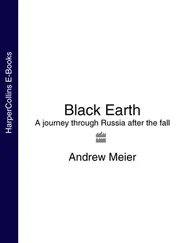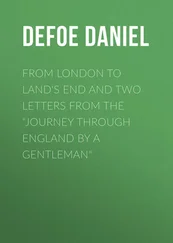On Orkney, the Orkney vole (twice the size of the field vole found on the British mainland) is a crucial prey species for the hen harrier. The relatively high numbers of hen harriers on the islands (on those islands in the archipelago that have voles) is attributed to the abundance and stability of the vole population. Many hen harriers overwinter on Orkney and voles are the principal reason these birds are not forced to migrate further south. In addition to voles, young curlews and starlings are frequently taken on the islands, as well as meadow pipits, skylarks and lapwings. Rabbits, too, are predated by the larger female harrier. Where voles are absent, hen harriers are able to breed as long as there is an abundant supply of passerine birds. But on Orkney, and over much of the hen harrier’s range, avian prey is, on the whole, secondary in importance and preference to voles and other small mammals, so much so that a scarcity of voles can impede the hen harrier’s breeding success. In Gaelic the hen harrier’s name is Clamhan luch (the mouse-hawk).
Midday and the moor is quiet, the slackest time of the day. The harriers are sitting tight. At Lammas time, under a full moon, people used to go up to the moors on Orkney to cut the stems of rushes to use as wicks for fish-oil lamps. And they went to the moors to gather the wiry cowberry stems to twist into ropes. The moors were a busier landscape than they are today, more interacted with. There was a steady trafficking of peats from off the moors: all the different grades of Orkney peat, peats that smelt of sulphur when they burnt, heavy yarpha peats with the moss and heather still on them, peats that burnt too quickly and left behind a bright creamy ash in the hearth. Geese (an important part of the economy on Orkney right up till the mid-nineteenth century) were brought down from the moors when they became broody and taken into people’s homes. Most houses on the islands were designed to accommodate the geese, with a recess cut into the wall beside the hearth where they were lodged to incubate their eggs in the warmth.
I get up to stretch my legs and go for a wander through the network of peat hags. I liked the notion of geese being ‘let in’ to people’s homes, of the architectural twist made to houses to accommodate the birds. In the Hebrides, if someone had an especially lucky day, it was said that they must have seen the Clamhan luch . In Devon the hen harrier was known as the Furze hawk ; in Caithness the Flapper ; Hebog llwydlas (the blue-grey hawk) in Wales; Saint Julian’s bird in South Wales; in the English Midlands the Blue hawk … We ought to let these birds back in. Today you can count the number of hen harriers nesting in England on your hand. And each year lop another finger off. They are not where they should be and their absence in the English uplands is shameful, a waste. A landscape devoid of hen harriers is an impoverished one. Hen harriers do predate red grouse – young grouse and weaker adult stock are the most vulnerable. But management of grouse moors and protection of hen harriers should not – does not need to – be incompatible. We need to let the harriers back in. Because a bird like this can change the way you see a landscape. Because (I promise you this) these birds will astonish you with their beauty. I wish others could see what I saw over Orkney, how the harriers made a ballet of the sky. I wish more people had the chance to see how the black wing tips of the male hen harrier are offset – made blacker – by his pearl-grey upper wings.
Some of the peat hags are so deeply cut into the moor it is like walking through a trench system. I can move across a flank of the hill without being seen. Except, of course, the short-eared owls have seen me. One of the adult birds has swum over to hover above my head. I can see the flickering gold and black patterns of its plumage, the gold like a dusting of pollen over its feathers. I sit down on the peat bank while the owl’s shadow grazes over me. Earlier, I watched one of the owls and a male hen harrier hunting over the same patch of moorland. The owl seemed to hold something back. At least, the owl was not quite as fluid as the male harrier, who appeared to give himself over completely to the wind, like an appendage of the wind, sketching its currents and eddies, its tributaries of warm air.
Later: the moor is woken by a loud clapping noise. I peer over the trench and an owl is spiralling downwards, ‘clapping’ his wings together as he descends, signalling, displaying to his mate, bringing his great wings down beneath him as if he were crashing a pair of cymbals, whacking the air to show how much he owns it.
I follow the line of an old fence across the hill. Beneath one of the fence posts I find a small pile of harrier pellets. They look like chrysalids, parcels of hair wrapped around hints of bone as if something were forming in there. I can make out the tiny jawbone of a vole with a row of teeth along its edge, like a frayed clarinet reed.
The quiet ran on through the early afternoon. I hadn’t expected this, that the moor could shush itself and doze in the day’s thin warmth. How does a bird that was once seen as a harbinger of good fortune in the Hebrides become so reviled? Three hundred and fifty-one hen harriers are killed on two estates in Ayrshire between 1850 and 1854; one keeper on Skye kills thirty-two harriers in a single year in 1870; another, on the same island, accounts for twenty-five hen harriers in 1873. An article on Highland sports in The Quarterly Review of 1845 illustrates the attitudes of the day:
Hawks of all sorts, from eagles to merlins destroy numbers [ of game ]. The worst of the family, and the most difficult to be destroyed is the hen harrier. Living wholly on birds of his own killing, he will come to no laid bait; and hunting in an open country, he is rarely approached near enough to be shot: skimming low, and quartering his ground like a well-trained pointer, he finds almost every bird, and with sure aim strikes down all he finds.
Though not so difficult to be destroyed as this article posits. The hen harrier, in fact (as Victorian game-book records testify), made an easy target: a large, slow-flying, ground-nesting bird with a tendency, amongst the females especially, to be fearless around humans when defending their nest. Female hen harriers are not unknown to dislodge hats, even scrape a person’s scalp with their talons, should they venture too close to the nest.
A male harrier drifts along the horizon. He lands on a fence post and begins to preen. The fence follows the horizon and the harrier, perched there, is silhouetted against the backdrop of sky. He glimmers there. Then he drops, pirouettes, hesitates a few feet above the moor and lunges into the grass. It is a quick, purposeful drop, not like the half-hearted pounces I have seen. I know straight away he has killed. I can see him in the grass plucking, tearing at something. After this, he feeds for several minutes. Then he is up and carrying the prey in his talons, flying direct to the nest site. And there is the female rising, making straight towards him.
My last day on the islands. I decide, reluctantly, to leave the Orkney Mainland and its hen harriers and travel to the southernmost isle in the archipelago, South Ronaldsay. I have heard about a place on the island called ‘The Tomb of the Eagles’, a Neolithic chambered cairn overlooking the cliffs at Isbister. And, well … the tomb’s name is enough to make me want to visit.
Late morning and I am walking out across the fields towards the cliffs at Isbister. The heath shimmers in the warm air. In the distance, a broken farmstead surfaces out of the heath like a whale. When I find the tomb I lie down beside the sea pink and begin to crawl along the narrow tunnel that leads into the tomb’s interior. Inside, it is a nest of cool air. The stone walls are rent with algae sores, green and verdigris capillaries. I make my way to the far end of the tomb and duck into a side chamber; it has a moonscape floor, sandy, strewn with pebbles. I sit down inside the cell with my back against the rock.
Читать дальше











